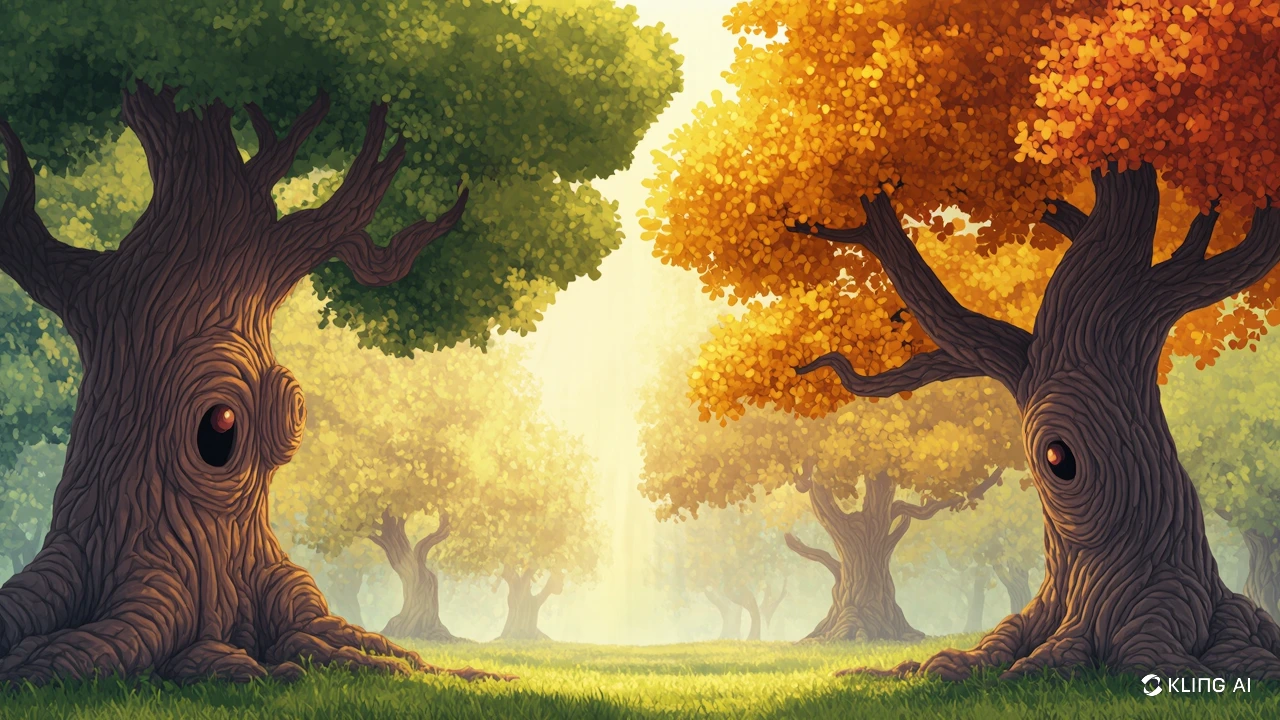How to Draw a Tree: Realistic and Cartoon Styles

🌳 How to Draw a Tree – Complete Guide to Realistic and Cartoon Tree Drawing (2025 Edition)
Trees are one of the most fundamental elements in landscape and environmental design, yet also among the most expressive when stylized. Whether you're aiming for realistic nature art or whimsical cartoon backgrounds, mastering tree drawing requires an understanding of both structure and style.
In this step-by-step 2025 drawing guide, you'll learn how to illustrate trees with botanical accuracy or playful exaggeration—just like professional concept artists, animators, and illustrators do.
🌿 Section 1: Tree Structure – Professional Construction Foundations
Every good tree drawing begins with an understanding of how trees grow and branch out in the real world. This will shape both your realism and stylization.
🌱 Structural Framework:
Taproot System: Visualize the tree below ground for grounding and realism
Branch Hierarchy:
Primary branches (thickest, start near trunk)
Secondary branches (smaller, angled)
Tertiary branches (thin, leaf-bearing ends)
Crown Shapes:
Oval (maple, beech)
Pyramidal (fir, spruce)
Spreading (oak, banyan)
🌳 Growth Patterns:
Excurrent Growth: Single dominant trunk (pine, spruce)
Deliquescent Growth: Dividing trunks with rounded crown (maple, ash)
Phototropism: Tree leans or stretches toward light sources
Wind-Formed Trees: Slanted growth, flag-shaped crowns
Sketch Tip: Draw a wireframe of the tree’s skeleton before adding volume—it helps keep branch logic intact.
🎨 Section 2: Realistic Tree Rendering Techniques
Realistic tree drawings are built from observation, texture, and lighting. Focus on subtleties like bark variation and leaf density.
🌳 Bark Texture Styles:
Oak: Deep, vertical cracks; rough, aged texture
Birch: Smooth surface with horizontal lenticel markings
Pine: Plate-like texture, layered in flaky sections
🍃 Foliage Rendering:
Leaf Clusters: Use clumping logic instead of drawing every leaf
Negative Space: Let light pass between branch layers for depth
Seasonal Variations:
Spring: Bright greens
Autumn: Orange/red gradients
Winter: Bare silhouette, exposed structure
Realism Tip: Paint with a soft-edged brush and random opacity to simulate light filtering through leaves.
🌲 Section 3: Cartoon Tree Stylization & Exaggeration
Cartoon trees allow for expressive, simplified design while maintaining recognizable form. These are great for games, animation, and storybook illustrations.
🧠 Shape Language Logic:
Round Trees = Friendly, playful, childlike (used in platformers, kids' books)
Spiky Trees = Dangerous, eerie (used in haunted forests, villains’ lairs)
Twisted/Irregular Trees = Quirky, enchanted (great for fantasy settings)
✏️ Simplification Strategies:
Signature Silhouette: Focus on recognizable shapes, not details
Chunky Branches: Exaggerate width for visual weight
Facial Expressions: Use knot holes, bark splits, and branch placement to imply emotion
Cartoon Tip: Make each tree a “character”—think about mood, setting, and exaggeration just like you would for a creature.
🌤️ Section 4: Advanced Illustration Techniques
Make your trees part of a believable environment by integrating light, depth, and movement into your artwork.
🌫 Atmospheric Perspective:
Background Trees: Less detail, cool/desaturated colors, soft edges
Midground: Moderate detail, simplified texture
Foreground Trees: Full detail, bold lines, deep shadows
✨ Special Effects:
Sunlight Filtering: Draw scattered light shapes across foliage or trunk
Wind: Slight curvature in trunks/branches, flying leaves, leaf streaks
Rain or Wet Bark: Use glossy highlights, darker bark tone, drip marks
Rendering Tip: Trees are never still—add energy through subtle leaf motion or asymmetrical branch flow.
💻 Section 5: Digital Tree Drawing Workflow
Whether working in Photoshop, Procreate, or Clip Studio Paint, here's how the pros sketch, render, and refine digital trees.
🖥 Step-by-Step Digital Process:
Gesture Sketch: Define trunk arc, crown shape, and overall flow
Structure Pass: Add branches using logic-based hierarchy
Texture Application:
Bark stamps
Scatter foliage brushes
Lighting Pass: Add rim light, shadow gradients, glow effects
Environmental Integration: Add background trees, grass, sky overlay
🖌 Recommended Brush Types:
Bark Textures: Custom stamp or alpha brush for cracked surfaces
Foliage Brushes: Scatter or leaf-shaped stroke with random rotation
Root/Grass Brushes: Useful for base grounding and composition framing
Digital Tip: Vary brush opacity and flow to create organic tree textures with more realism.
📚 Bonus Practice Ideas – Expand Your Tree Drawing Skillset
🍁 Create a “Tree Dictionary”: Draw 10 tree species with label (e.g. Oak, Willow, Fir, Palm)
🌳 Draw the same tree in four seasons
🌲 Design a magical tree with glowing roots, floating leaves, or ancient runes
🏞️ Sketch a forest scene: Background trees → midground → detailed foreground
🌿 Final Thoughts – Draw Trees That Tell Stories
From wind-battered pines to cheerful cartoon evergreens, tree drawing is a fusion of biological form and artistic style. By combining structure, texture, and imagination, you’ll be able to create trees that ground your environments and give life to your worlds.
So open your sketchbook, choose a branch path—and start drawing one tree at a time!